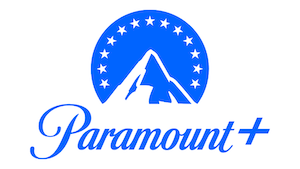Long ago, in a small part of the Mushroom Kingdom, there was a beautiful city, made of stone and marble. However, a terrible calamity struck the town, and it sank beneath the waves. One thousand years later, a hive of scum and villainy has risen in its place: Rogueport. Princess Peach finds an old treasure map, supposedly leading to a great treasure in the underground city. Of course, there’s only one plumber who can help her find it: Mario!
Paper Mario is finally back in proper form with a remake of Paper Mario: The Thousand Year Door! TTYD is a childhood favorite of mine and many others, and is often regarded as one of the best Mario games if not one of the best RPGs ever made. It’s clear Nintendo wanted to take the series in a different direction after this title, to… let’s say, mixed results. But was The Thousand Year Door really that good? Or was the Origami King right all along?
Paper Mario: The Thousand Year Door makes a fantastic first impression thanks to some stunning visuals. The paper effect has been toned down from the previous title, Origami King, but is more overt than the N64 and GameCube originals. Characters look like complex paper dolls rather than a single sheet of paper. Joints like arms and legs are placed slightly above or below the body, giving each character a bit of depth to them. It’s a flawless effect, especially the minor imperfections like slight white outlines on certain parts of characters or pieces of cardboard making up the environment not being quite so straight. This really feels like the Paper art style taken to its best conclusion; not so overt as to overpower everything else, but not so subtle as to be incidental.
That’s not even mentioning the best part of the visuals, the lighting. It’s absolutely breathtaking just about everywhere you go, from the sunny Keelhaul Key to the sunset of Riverside Station to the twilight of Twilight Town. Frankly, if I didn’t know better, I would have bet this was Nintendo’s first foray into Ray Tracing. I think they did go a bit too far with reflections in some instances, like why is the grass shiny? But overall this is easily one of the best looking games on Switch.
Unfortunately, that visual fidelity does come with a few drawbacks, namely the game runs at 30 frames per second whereas the original ran at 60. As someone who has played on GameCube several times, this immediately threw me off, even just on the title screen, but after a few hours I stopped noticing it. The timing for Action Commands and Superguards has been adjusted to accommodate for this, and it still feels good to play. Still, I can’t help but wonder if this game was really meant for the successor to the Nintendo Switch to run at higher frame rates and resolutions.
Despite a few creases, the game is still a Bobomb blast to play. As Mario, you explore a variety of environments to solve puzzles, do some light platforming, find secrets, and of course battle enemies in turn-based combat. Just like the original Paper Mario and Mario & Luigi games, you can get the advantage in battle by jumping on or hammering an enemy on the field for a first strike. Enemies can also do the same to you though, dealing some quick damage before the battle proper begins.
Battles take place on a stage, with the background unfolding as the curtains rise each time you engage in combat. Mario and his partner take their place stage right, while the enemies show up stage left. Mario can take one of several actions on his turn including jumping on an enemy, hammering a foe, using an item or special move, and more, while his partner can use one of up to four unique abilities, use an item, or miscellaneous actions like defending, appealing to restore star points, running away, or swapping out to another partner. Most actions come with Action Commands, timed button presses required to properly complete the attack. For example, pressing A the moment Mario jumps on an enemy will cause him to hit a second time. The same applies to guarding attacks, and by pressing A at the right time you can reduce incoming damage by 1 point, which is significant when the game keeps damage and health pretty low. However, you can press B with exact timing to counterattack with a superguard instead. You’ll take no damage and possibly deal a little to the attacking enemy.

Combat is pretty simple, but gets more complex when you add on the badge system. When leveling up, you can choose between increasing Mario’s HP, Flower Points which can be spent on special attacks, and Badge Points which are required to equip badges. I spent most of my level ups on BP, which let me experiment with equipable attack badges like Multibounce or Fire Drive and stat increasing badges to maximize Mario and his partners’ attack. At the start of the game, you’re dealing maybe 1 to 2 damage per hit, but by the end a jump attack deals 14 damage, even to bosses. You could even go the opposite direction to focus on defense, making Mario an absolute tank that takes little to no damage. If you like danger, you can keep your party constantly in Danger or Peril (below 5 or at 1 HP) for massive attack increases and a chance for every incoming attack to miss. It’s an incredibly expressive battle system that can make every playthrough different, despite the game otherwise being a very linear RPG.
There is one constantly annoying issue throughout the game, and that’s the menus. Not the menus themselves actually, but there’s a significant amount of delay between when a menu pops up and when you can interact with it. It’s only about a second, but that really adds up over a playthrough and makes the game feel much, much slower than the original. There are a lot of small changes like this, and thankfully most of them are good like widening the timing for Superguards, some altered dialogue, and others, but this lag is consistently frustrating throughout the entire game.

Those other changes are universally positive, There’s slightly less backtracking in Chapter 4, a post-game epilogue allows you to finish your business without going all the way back through the final dungeon, Ms. Mowz will now passively sniff when very close to treasure making her ability much more useful, and I could go on about 100 other little changes like the location of Frankie’s wedding ring. The soundtrack has also been entirely redone, to unfortunately mixed results. In particular I find the new soundtrack overuses overdriven guitars. Most of it is fantastic, like the new character themes for most partners. There are even some dynamic tracks that change instrumentation depending on where you are or progress in the story, like the music for Rogueport or the song in the Thousand Year Door’s chamber. It’s super cool, but if you want you can purchase a badge to go back to the original soundtrack, which is a great touch. It costs 1 coin and requires 0 BP to equip, but I’m still confused as to why this isn’t just in the options menu. It’s barebones as it is, only allowing you to change rumble intensity and screen brightness. You can’t, for example, adjust the volume of music, sound effects, and voices which aren’t perfectly mixed all the time. In the Glitz Pit, I found the music to be way too quiet for example.
By far my favorite change, however, is making Vivian canonical trans within most translations. It’s a small change, but makes her story that much more impactful, and means a lot to me personally besides. Good on you Nintendo, and I hope we can see more queer characters in your games in the future.

Aside from those great changes, some frustrations remain from the original game. Flurrie is still basically useless in battle, the backtracking is somewhat mitigated by the expanded warp room yet remains a slight annoyance, the game’s side quests, called troubles, aren’t particularly interesting, and overall the game is too easy for its own good. In fact, it’s even easier now thanks to the option to retry individual battles after a game over. Using this, I was able to complete the Pit of 100 Trials before starting Chapter 3, completely breaking the leveling curve. I love having the ability to do this, but I suspect the game would still have been super easy even without those extra levels. The new superbosses do offer a great challenge, but I would have gladly taken the option for a hard mode.
















